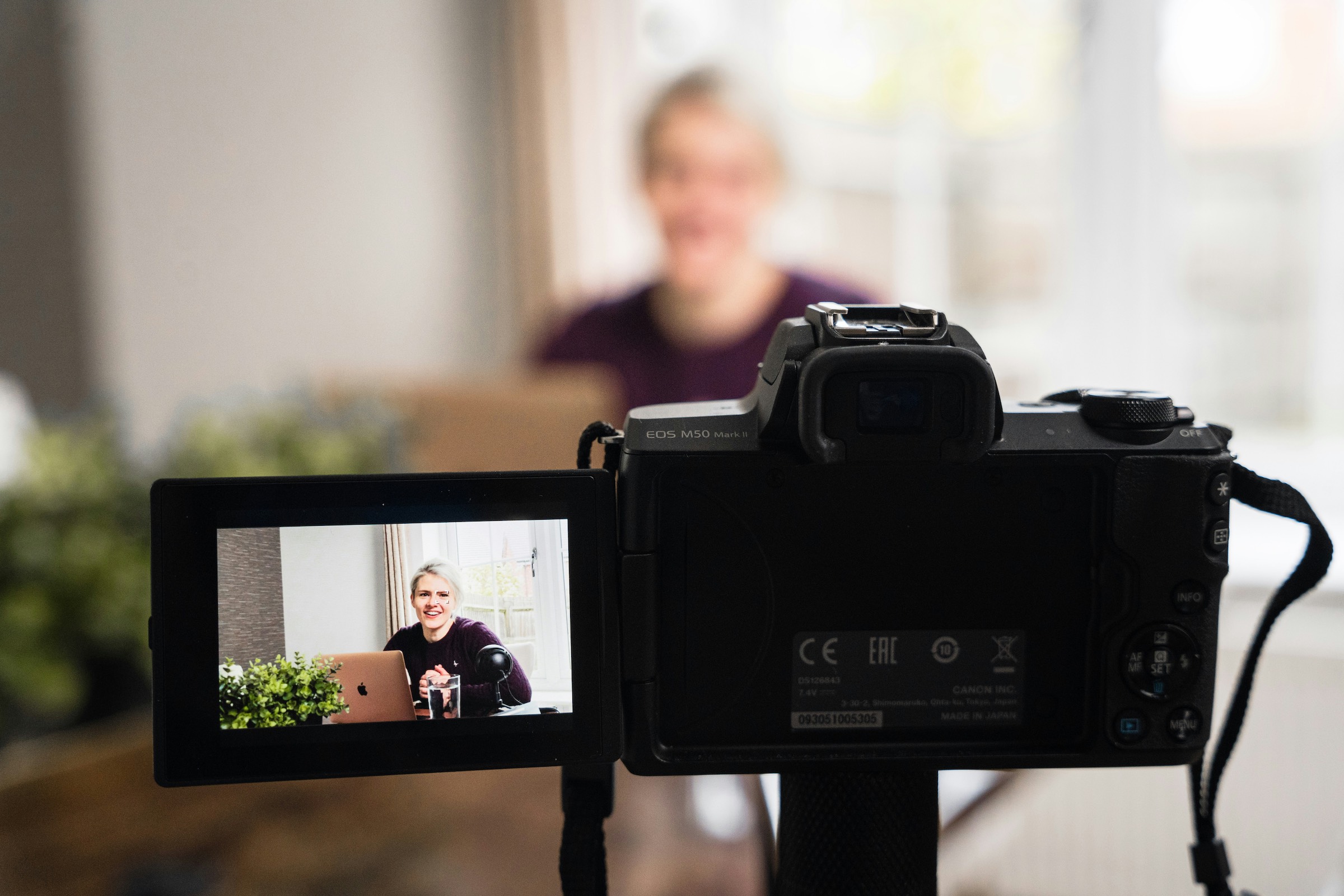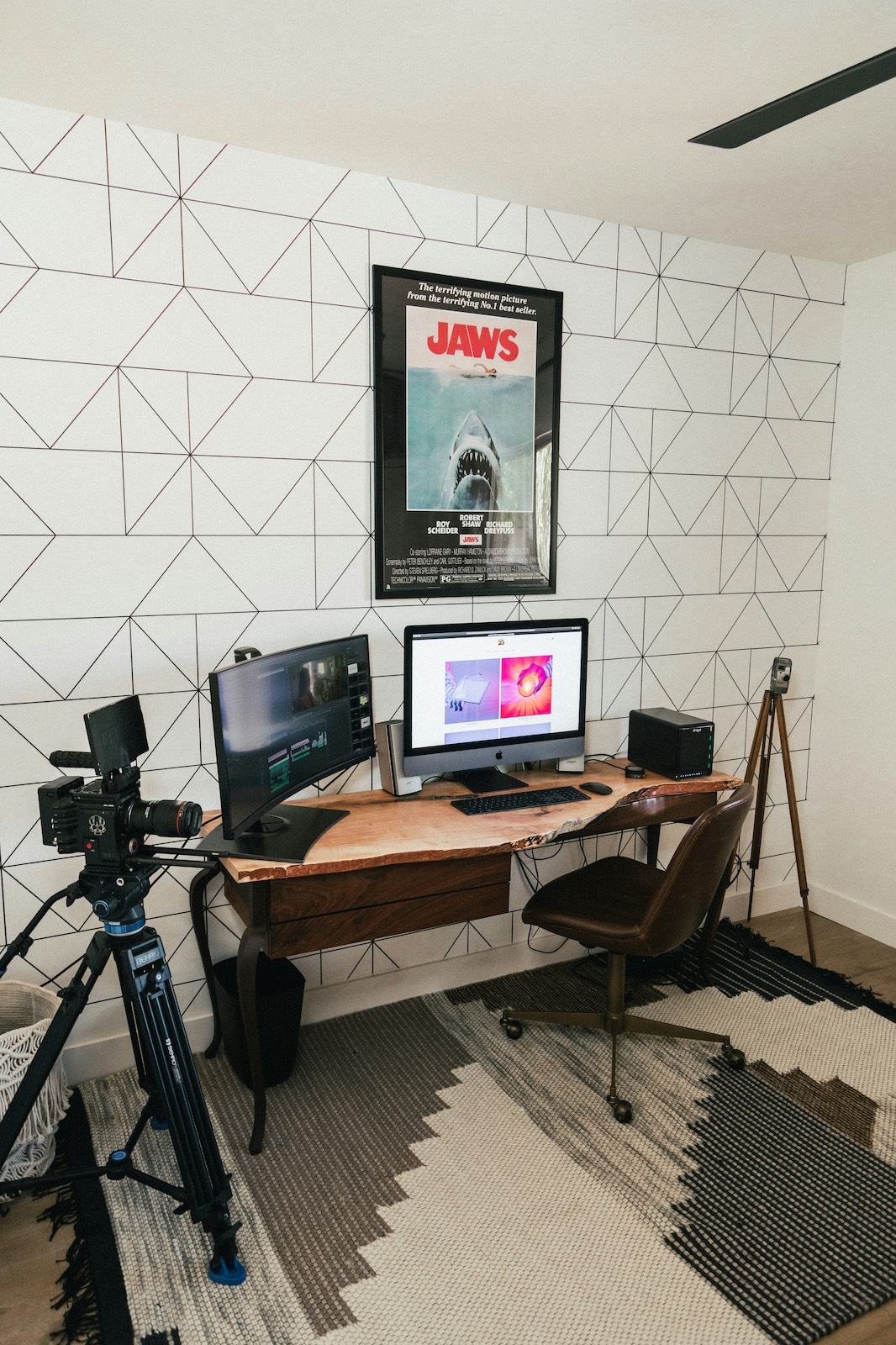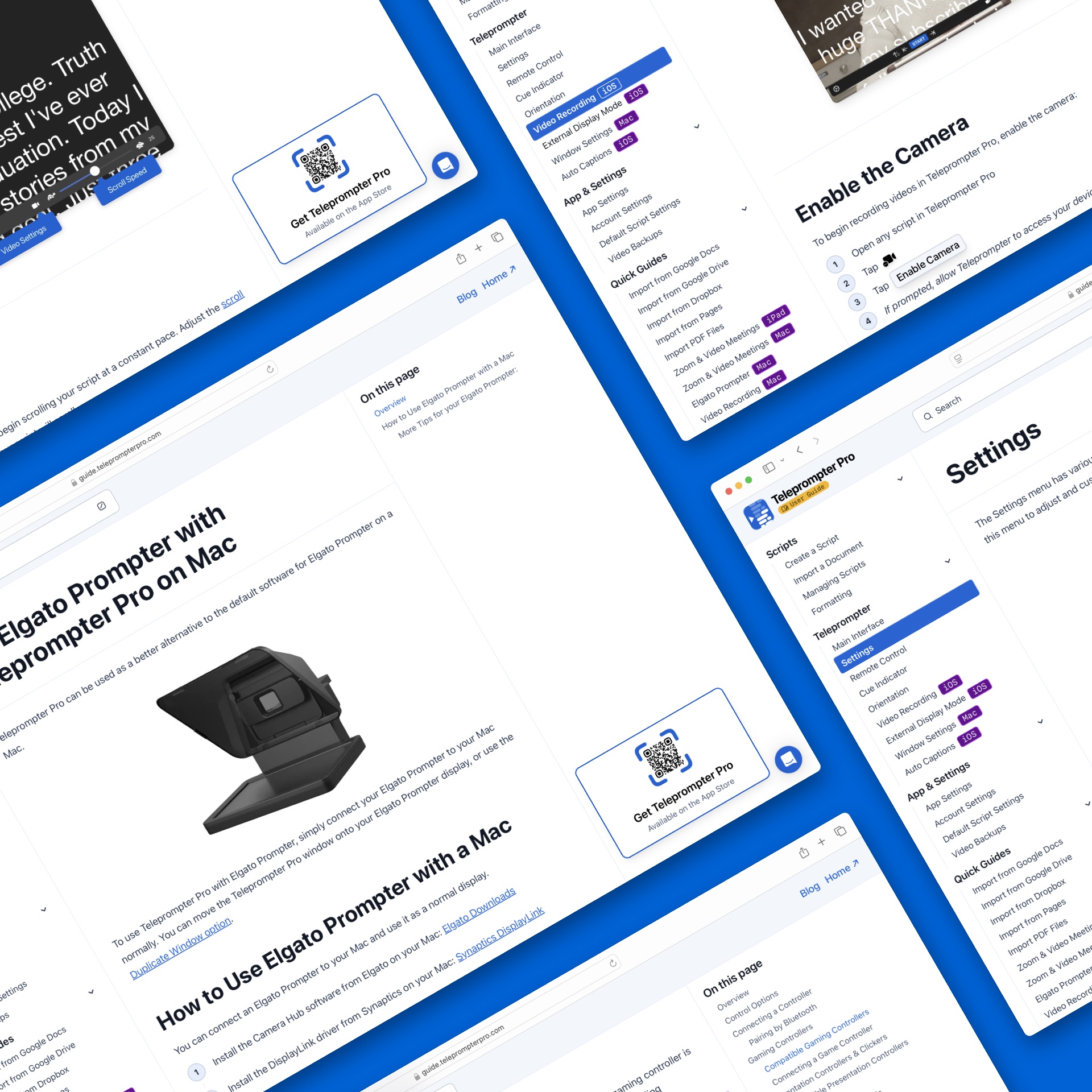20 Tools and Tips to Improve Your Webinar or Masterclass
Have a webinar or masterclass coming up? These 20 webinar tools and tips will help you make the most of your timeslot and maximise audience engagement.

Have a webinar or masterclass coming up? Whether it’s your first or your fiftieth, this guide will help you make the most of your timeslot and ensure maximum audience engagement.
A successful webinar always strikes the right balance between entertainment and education. But this isn’t always easy to do, especially if you suffer from public speaking anxiety (you can find some tips on how to deal with that here!).
If you have a webinar or masterclass coming up and you want to leave a great impression, read on. From marketing your webinar to how you present your content, this article covers everything you need to nail your presentation and ensure maximum audience engagement.
Your webinar content
Focus on the outcome
All successful webinars have something in common – the host or guest speaker has something truly unique or valuable to offer attendees. Ask yourself, ‘what do I want my audience to leave with?’
- Are you empowering them with a new skill?
- Do you want to inspire them to take action?
- Are you helping them prepare for the future by sharing enlightening information or predictions?
Your answer i.e. the outcome of the webinar should be your primary focus when putting your presentation together. Check over every slide and point you make: if it doesn’t directly contribute to the outcome or help move the presentation forward, you should remove it completely.
By staying focused on the outcome, you can be absolutely sure that your webinar will be valuable to your audience, improving engagement and reception. It will also make the job of marketing your webinar a whole lot easier, as you’ll thoroughly understand your key selling point.
Choose your webinar platform
It’s important to consider which webinar platform you’ll use before creating your content. Some offer more functionality than others, with varying price points. There are lots of options to choose from, so it’s best to consider your budget and ‘must-haves’ before making a decision. Here are some things you’ll want to take into account:
- Video and audio quality
- Price point
- Background noise reduction
- Transcription features
- Interactive features like live polls, Q&A, and chat boxes
- Supports multiple presenters
- Mobile access
- Analytics and reporting
- Screen sharing functionality
- Custom branding
- Integration with third party apps and tools
- Security features
Zoom remains one of the most popular choices for webinars, and for good reason. Most people are already familiar with it, it has decent interactive features, and integrates with lots of third party apps and tools. However, if you’re looking for something a bit more sophisticated and holistic, you could check out alternatives like WebinarJam and Demio.
Keep your designs clean
When it comes to webinar design, less is more:
- Keep text to a minimum on your presentation and never read straight from your slides as if they’re your script.
- Colour your slides to your branding, but make sure the colour scheme is cohesive and consistent to avoid distraction. Also make sure that the text is easily readable within your chosen colour scheme.
- Use images, videos, and GIFs to create a more entertaining experience, but only when it helps move your presentation forward or emphasise your point.
Pro tip: If presentation design isn’t your forte, you can access thousands of free, customisable templates on Canva. Canva is known for its ease of use, even for beginners, and its Present feature lets you run through your presentation directly through the app or website. Plus, you even add private speaker notes to each slide, which is great if you prefer to read off of a script or have some bullet points to hand.
Keep the first 5 minutes free
You should always keep the first 5 minutes of your presentation free to allow for latecomers, and to let everyone else settle in. This is also your chance to sort out any technical issues and make sure your attendees can hear and see you clearly.
It’s a great time to break the ice, too: create a humorous welcome screen, get people to say hello in the chat, or ask them to take part in a quick poll (more on this later). It’s good practice to log in a few minutes early to make sure you’re prepared when they arrive.
Include infographics
Good infographics don’t just look good – they make your presentation more engaging and easier to understand. You don’t need a graphic designer to make them, either – Canva has lots of customisable infographic templates to choose from, as do sites like PiktoChart and Venngage. Each website comes with its own advantages and disadvantages, so check them out to see which one works best for you.
Collaborate with industry experts
As mentioned above, successful webinars must provide something unique or truly valuable to their audiences. That means the host or speaker should be both knowledgeable and passionate about the topic in question – one without the other will fall flat.
If you don’t consider yourself an expert in the topic you want to discuss, bring in an expert who does. Choose someone who is enthusiastic and charismatic – and preferably someone with a large social media following. Collaborating with higher-profile experts will not only make it easier to market your webinar, but it can also create opportunities for networking and speaking slots of your own.
Pro tip: If you have more than one guest speaker on your webinar, a panel discussion format tends to be more engaging and energetic than individual presentations.
Get people involved
As social media chips away at our attention spans, it’s increasingly difficult to keep webinar attendees engaged for the full duration.
Research conducted by the University of Wisconsin showed that students began zoning out after watching just 15 minutes of video. Based on these findings, it’s recommended to condense your webinar into 10-15-minute blocks to ensure optimal audience retention and understanding.
You should also make it feel like they’re active participants, rather than passive ones, to help keep them alert and involved. Here are some things you can try:
- Create polls and surveys to welcome feedback or opinions on topics as you go along
- Ask or invite questions, then read out and/or respond to these questions or answers
- Introduce a new speaker
- Tell your audience to take a quick break or a sip of water
- Give attendees small assignments to work through together e.g. coming up with solutions to an example problem
- Incorporate interactive features like quizzes or puzzles
Optimise your webinar for mobile
While most people will attend your webinar via desktop, a portion of your audience may watch it on their mobile phones. With this in mind, you should optimise your presentation for mobile by making sure the text and images are large enough and choosing a mobile-friendly webinar platform e.g. Zoom.
We also recommend rehearsing your entire presentation and viewing it on a mobile device to see if anything needs to be changed.
Marketing your webinar
Create an attractive landing page
Every webinar needs a good landing page to convince people to sign up and make sure they know when to attend. When creating your landing page, you’ll want to include the following:
- An engaging and concise title
- A summary of what the webinar will be about and who it is for
- Highlight the key benefits your audience will receive
- Specify the date and time of the event (and if it will be available to download or rewatch after)
- Credentials and/or background information about the host or guest speakers
- Testimonials from past webinar attendees, students, or mentees
- High-quality images or videos that are relevant to the topic
- A quick registration form that requires minimal details i.e. name, email, and number
- Clear call-to-action buttons throughout
Pro tip: If web design isn’t your thing, you can easily create a landing page using templates on Canva, Leadpages, Kit, or Unbounce. These are just some of the most popular landing page builders. Each has its own benefits to offer, so check their features and pricing on their website to see which best suits you.
Send reminders
Email reminders are one the easiest ways to increase attendance rates for your webinar. If you use a platform like Kit, you can create an entire email reminder sequence and schedule everything in advance. These platforms have some great templates to choose from, too.
To help maintain buzz and excitement around your webinar, you should also consider including something of value in your reminder emails. This could be a quick teaser video to remind them about what’s going to be included in the session, or 3 helpful tips related to your niche.
Be sure to include a calendar link in your email reminders to encourage attendees to put the event in their diaries. This simple step could make a huge difference to your turnout.
And aside from sending emails, you can subtly remind your audience of your webinar through social media posts or stories.
Create collaboration posts with your guest speakers
One of the biggest benefits of inviting guest speakers on your webinar is that you instantly gain access to their audience. If they’re already amazing at self-promotion, great! If they aren’t, you can make life easier for them by creating all marketing collateral for your webinar and simply asking them to repost it. And if you and your guest speakers all have Instagram, you can simply create one post and invite each speaker as a collaborator!
Create a promotional video
The vast majority of people now consume most media and information through TikTok and YouTube, and this makes video the best medium for marketing.
We recommend creating a short and engaging intro video that explains the benefits of your webinar to potential attendees. Explain why the webinar is important, who should care about it, and what problems it’s going to solve for people – basically everything you covered in your landing page. You can then promote the video with paid ads on social media to reach a much wider audience than if you were to promote it organically.
Give away a freebie for signups
Giving away a small freebie for webinar signups can greatly increase your attendance rates. Just make sure the freebie is relevant to your webinar topic to make sure you reach the right audience. Some ideas include a helpful PDF or a discount code for your services.
Social media that gets people involved
Social media is the go-to place for promoting almost everything these days. But for your social media marketing to actually work, it has to get people involved or spark an emotional reaction. Luckily, it’s quite easy to invite interaction on social media these days. LinkedIn, Instagram, and Facebook have lots of options like polls and quizzes that help your audience get involved in a single click.
Before your webinar begins
Choose your background wisely
Keep your background clean and professional, and choose somewhere without risk of interruption. You can use Zoom virtual backgrounds if you can’t find anywhere suitable! You’ll want your face to be illuminated and clear, but don’t film directly in front of a window – this can cause overexposure and the changing light may be distracting. A clip-on ring light or desk light is always a good option.
Try to keep background noise to a minimum, too. You might not notice the sound of your dishwasher or washing machine anymore, but your attendees might find the strange noises very distracting. Plus, if you ever want to convert your webinar into a podcast, you’ll wish you did more to avoid background noise.
Pro tip: Krisp.ai has an ai-powered background noise cancellation tool that’s highly rated. The free plan includes 60 minutes of noise cancelling per day, which is perfect for an hour-long webinar!
Test your gear beforehand
It’s essential to test all your gear beforehand – a muffled mic or a loose connection can spoil the whole experience. You can do a quick sound check by logging into your webinar platform an hour or two before your event begins. Have someone else log into the meeting with you and give you feedback on your audio and camera feed.
If you have time, you may even want to do a full run through of your webinar with your guest speakers. This could be especially helpful if you are planning on sharing screens and toggle controls. By practising beforehand, all presenters can get used to the webinar schedule and mechanics of the platform you’re using.
Prepare your applications
Start up all the applications you’ll be using during your webinar, and close any unneeded windows, tabs, and applications. This is a simple step that could help you avoid a slow or unresponsive computer when presenting.
Presenting your webinar
Use a teleprompter
If you tend to lose your train of thought or stumble over your words when public speaking, you should consider using a teleprompter app. Lots of public speakers and presenters use a teleprompter when speaking or hosting a webinar – here’s why:
- It helps you stay on track with your webinar schedule
- It ensures you don’t miss any important points
- You’re less likely to misspeak or share incorrect information
- Preparing your entire speech in advance can make you feel more confident
- It reduces filler works that might make you look nervous or unsure
If you’re concerned that using a teleprompter might make you sound robotic, don’t worry. We recommend using a free teleprompter app like Teleprompter Pro. It’s completely customisable, so you can adjust settings like the scroll speed and font size to read at a pace that feels comfortable to you. You can also add stylised text like bold and italic to give yourself a visual cue of when to inflect your words or emphasise a point. In this respect, a teleprompter can actually improve the delivery of your speech to no end.
After your webinar
Follow up with attendees
Just because your webinar has finished doesn’t mean you should cease communications with your audience. It’s crucial to follow up with your attendees to leave the best impression and get feedback on the event.
Here are some ideas for how you can follow up after your webinar:
- Send a simple thank you email to show your appreciation and keep the information fresh in the attendees’ minds.
- Send attendees a quick feedback survey using SurveyMonkey or Google Forms (you’ll get more responses if you give them a reward for completing it!).
- Share the recorded version of the webinar so they can rewatch it again in the future or share with others.
- Provide extra material such as supporting PDFs or inspiration for what they can do next.
- Plug your services or future events and webinars.
- Address any unanswered questions from your Q&A session (this is particularly valuable if you ran out of time and it will mean a lot to those who asked).
Analyse your data
To make sure that your next webinar is even better, you should always analyse your data after each event. Look at things like attendance rates compared to signups, what percentage of attendees interacted with polls, and how many questions were asked. If any of these metrics are less than satisfactory, work harder on those areas next time.



